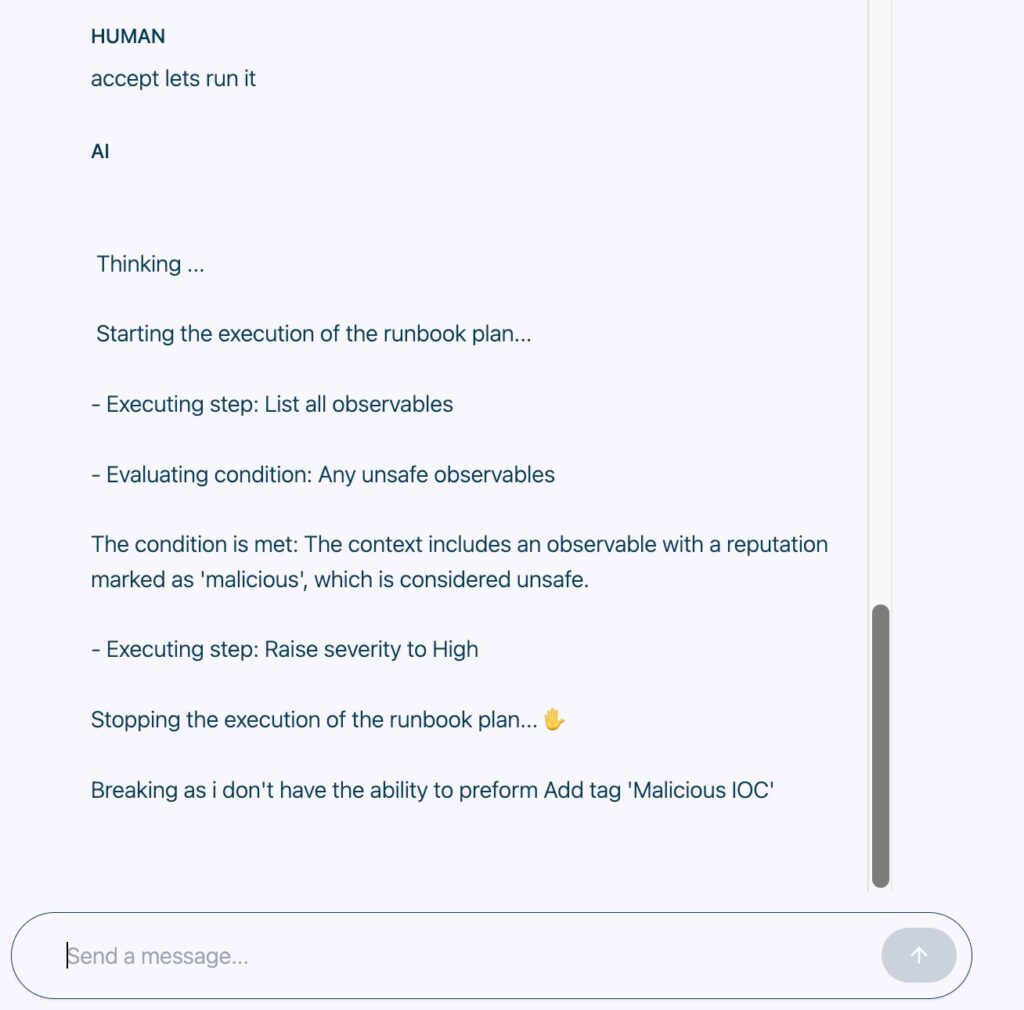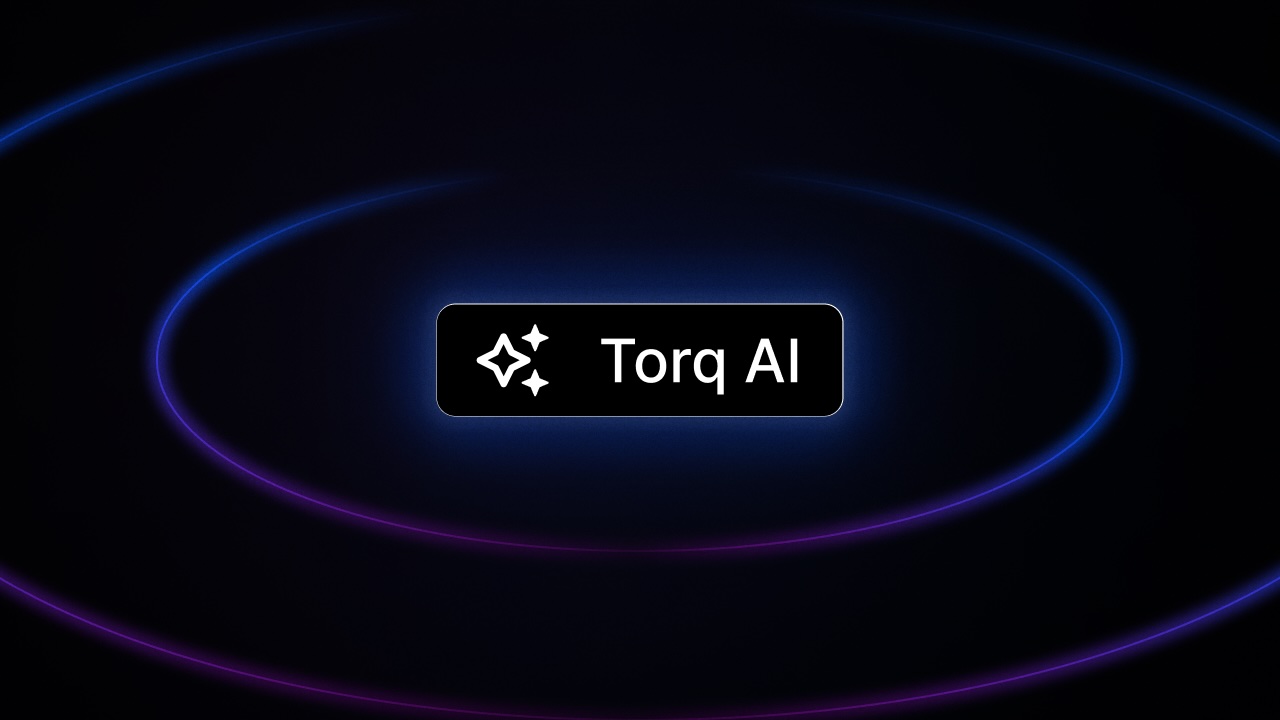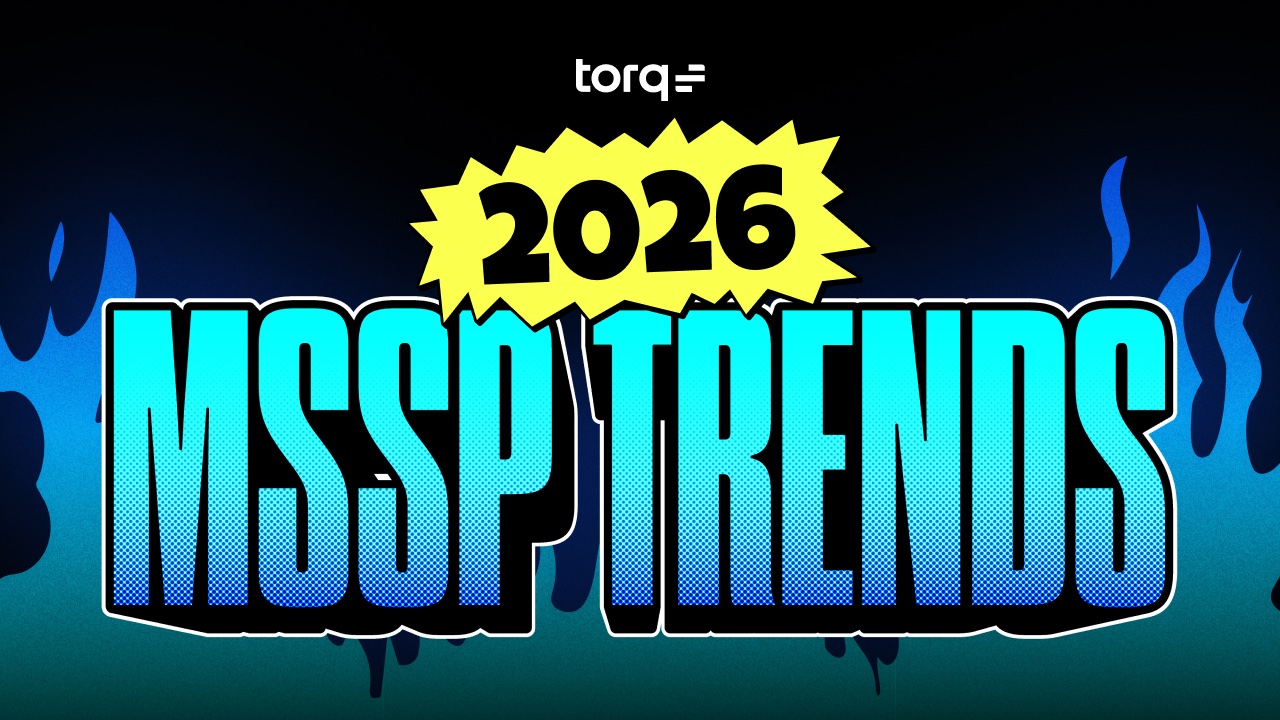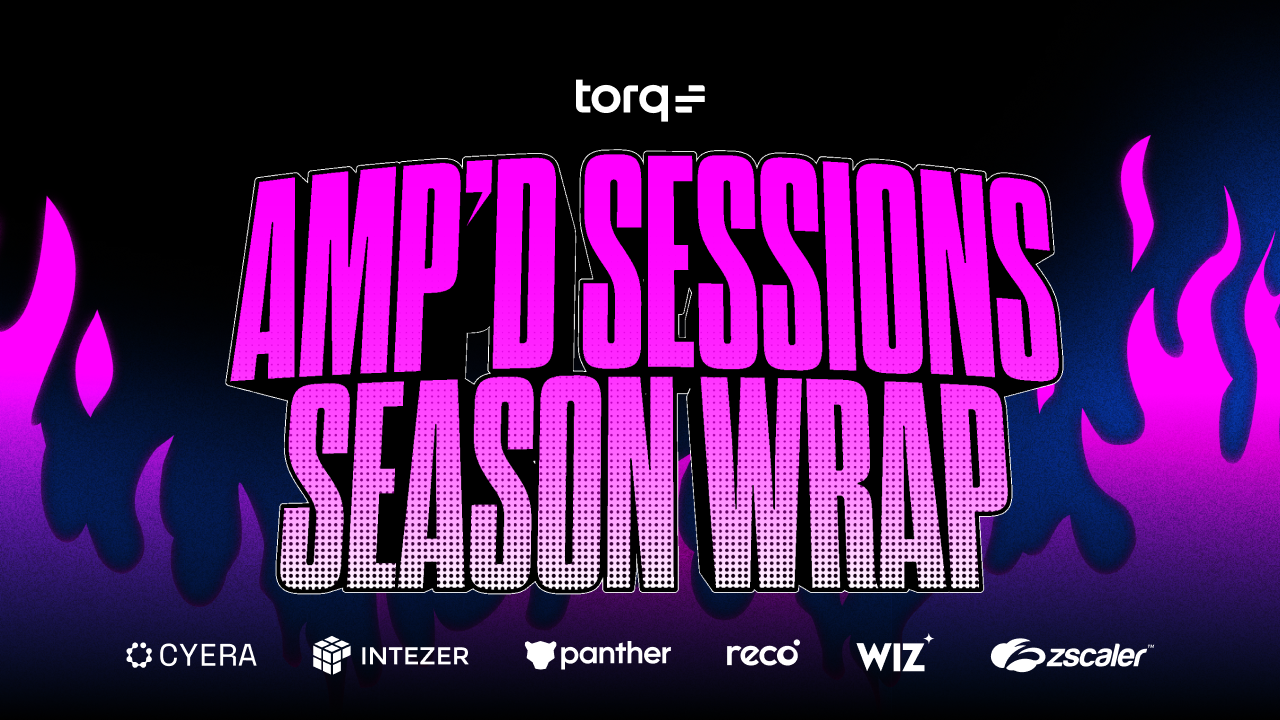Contents
Get a Personalized Demo
See how Torq harnesses AI in your SOC to detect, prioritize, and respond to threats faster.
Our previous blog post explored how planning with AI systems can set the stage for smooth collaboration between humans and machines. However, a solid plan alone isn’t enough. The next step is orchestrating the execution — ensuring that the AI system can carry out tasks autonomously while maintaining guardrails that prevent errors, hallucinations, or false actions.
The Challenge of Direct Execution: LLMs Alone Aren’t Enough
Moving from a free-text runbook to execution without a structured schema is where most AI implementations fail. While large language models (LLMs) are powerful, they continue to struggle with AI autonomy due to:
- Hallucinations: Making incorrect assumptions or executing invalid steps.
- Ambiguity: Choosing the wrong tools or extracting incorrect arguments from the execution context to pass to the next step.
- Lack of Determinism: Struggling to execute tasks consistently without a clear structure, often leading to indeterministic execution where the AI agent may jump between steps out of order or skip them altogether.
Simply put, letting the LLM orchestrate execution without structure and guardrails lacks the precision needed for a reliable execution process.
Streamlining the Execution of a Clear and Reliable Plan
To address this, Torq implements a concrete structured execution scheme that ensures Torq’s AI system performs tasks deterministically and without ambiguity. Once the high-level plan is developed, the AI extracts each step as an atomic unit — clear, precise, and sequential.
This structured approach eliminates the risks of indeterministic execution, where the AI agent might skip steps, go out of order, select incorrect tools, or misinterpret arguments due to vague instructions.
Think of it like following a recipe step by step: after deciding to ‘make dinner,’ you break your activities into clear, sequential micro-tasks like ‘bring water to a boil’, then ‘add pasta to the water.’
Similarly, Torq built our AI to execute a detailed plan one micro task at a time, in the right order. This allows Torq’s AI system to analyze and break down instructions and examples for each step, ensuring the AI completes the overarching task accurately. By eliminating ambiguity, the structured execution guides the AI to select the right tools and arguments at every stage, delivering consistent and reliable results.
AI Guardrails: Balancing AI Autonomy and Control
While we aim to maximize AI autonomy, balancing it with guardrails is critical to ensuring its safe and reliable execution. These guardrails act as safety nets that prevent the AI from taking false or unintended actions, ensuring human oversight remains available when necessary.
The key is for the AI to be able to break down the execution process into atomic steps that it can handle precisely. The system then focuses on clear micro-tasks for each step, reducing ambiguity and enabling the AI to perform confidently.
However, when the AI encounters uncertainty — such as ambiguous context, missing tools, or incomplete arguments — it pauses execution and escalates the decision to a human operator. This human-in-the-loop mechanism mitigates the risks of hallucinations or incorrect tool usage, providing a safety checkpoint before the AI proceeds.
By combining structured execution with these dynamic guardrails, we can push the boundaries of AI autonomy. This allows the AI to operate efficiently and autonomously in most cases, saving significant time and resources while ensuring that safety and accuracy are never compromised.

Reliable AI-Powered Execution at Scale
Orchestrated execution unlocks AI’s full potential by combining precision, autonomy, and control. By leveraging a step-by-step structure, AI can focus on atomic tasks, ensuring consistency and reliability at every stage. This approach streamlines workflows requiring constant human intervention, enabling AI to act efficiently while remaining grounded in a structured plan.
For Security Operations Center (SOC) teams, this translates to faster and more reliable execution of security runbooks at scale. This reduces the need to micromanage AI-powered SOC processes or perfect the prompts to control the AI, giving SOC teams more time for higher-value tasks while ensuring confidence in the AI’s structured execution.
The Future of AI Autonomy in the SOC
Choosing solutions that orchestrate AI execution with appropriate guardrails is critical for building trust, efficiency, and precision in today’s SOC operations. AI that structures execution as a series of deterministic micro steps and balances AI autonomy with human oversight allows SOC teams to confidently rely on AI systems to streamline their workflows.
This collaborative approach enables SOC analysts, engineers, and managers to:
- Maintain control over automated processes
- Trust in AI’s reliability for step-by-step execution
- Focus on higher-value work while reducing uncertainty
The result is a stronger, more efficient autonomous SOC environment where human expertise and AI capabilities work seamlessly together. Schedule a demo today.








